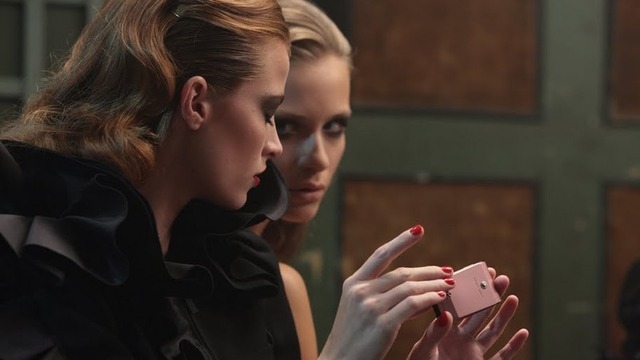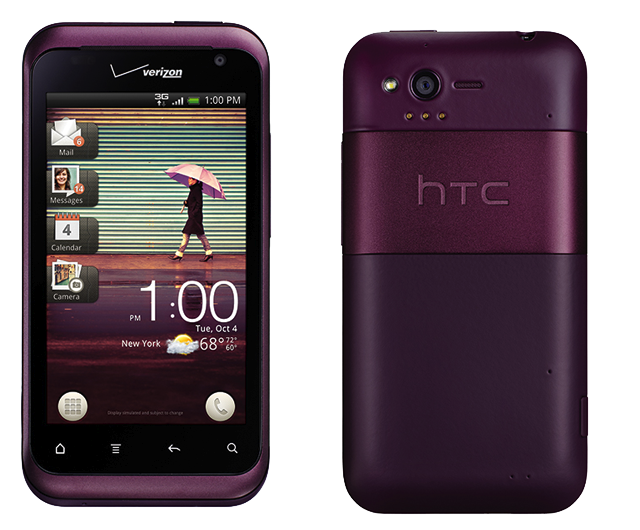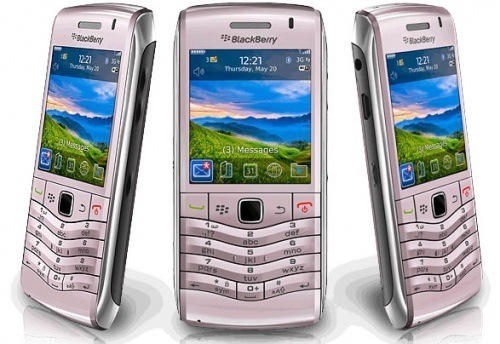
Women are accosted everywhere by pink: pink toys when they're young, pink clothes when they're teenagers, pink beer when they're adults. That wasn't the case in tech, which for decades created a black and chrome world, but as even advanced gadgets have gone mainstream in the last decade, pink has followed.
I'm not a professional pink hater, but at times I feel a low-level resentment of pinked-out technology; when companies churn out the Pink Version of some gadget, they aren't just filling out the rainbow in their product line. They're signaling the device is okay for women to use. Sometimes it can feel insulting.
But the more I investigated "lady gadgets," the more trouble I had condemning the color. The condemnation of pink things, particularly pink gadgets, often lacks a certain nuance. "This is pink, it's offensive!" "Why?" "It's discriminatory!" "Why?" "Because it's stereotyping!"
Product pinkification does bother people (see the reasons given below). But personally, I'm more concerned about a nefarious type of lady gadget that companies now push routinely: a gadget that isn't just "feminine" in color but is "feminine" in use. These are gadgets for women. If you suspect they are more patronizing than the pink versions of existing products could ever be, you would be correct.
Is pink the problem?
Pink products are often explicitly gendered color coding. People have been sliced, diced, and placed into bins by professional marketers for more than century now; pink is often used as a shorthand signal to women.
Targeting bright pink things specially at women can imply, "Dark, masculine things are scary! Here, this one is for you, you frightened and twitchy fawn." Women learn that pink products are suitable for their use; those that are not pink, or are not yet pink, might be too hardcore. (Shipping your pink phone with a with a makeup kit doesn't help this perception.)
Obviously, this isn't true in any objective sense. Women have managed to use cars, telephones, tractors, and lathes without pink versions. But the flood of pink continues unabated.
Are manufacturers infantilizing women in the process? "Pink is the colour of the trivial," wrote Katrina Onstad last year in Canada's The Globe and Mail. She objected to the "new pink ghetto" because "fairly or unfairly, pink—demure, unthreatening, feminine—is not really the color of a strong, wise adulthood."
But I find it hard to blame pink itself; most of the infantilization around pink seems to be a social construct. If lime green became the "color of women," we'd still have a problem: color, not functionality, is saying that some gadget is "right" for you. Indeed, plenty of men like pink too. Our own Peter Bright bursts into regular fits of apoplexy at ads for the magenta Lumia 800 which feature a female narrator and show the device being used by a woman for "today's little adventures." He'd love to have one, but finds the marketing so patronizing and sexist that it's as though Nokia is ordering him not to buy.
What's insulting is the more insidious category of products that are specially tailored in function and design to women—and that offer reduced functionality for the same (or a higher) price. Consider, for instance, the smartphone.
Worse products, same price
I spoke with Janet Wise, director of primary research at ABI Research, who noted that there are no specific differences in the way men and women use smartphones. "Differences in usage are really more a function of age," Wise said. She noted that while men are more likely to do things like check sports scores on their smartphones, normal smartphone activities like texting or browsing the Internet are conducted in equal rates by both genders.
Yet as more smartphones appear, they target women in increasingly demeaning ways. I'm certainly not the first to notice this: others who work in technology have commented on the gall of smartphone makers. Of one phone, Joanna Stern writing at This Is My Next last year, said, "We simply can't imagine a company creating a phone specifically for American women in this day and age."
"Does it come with yogurt?" Irin Carmon of Jezebel asked of the same woman-targeted phone.
To show how companies target, and help to perpetuate, the idea of a technologically illiterate lady, we've picked out a few smartphone examples from the recent past, and one coming in the near future.

HTC Rhyme
At launch, the Rhyme featured 2009 performance at a 2011 price. The injustice of paying $199 for a single-core processor and 768MB of RAM running Android is supposed to be mitigated by the inclusion of a boodle of accessories, such as a matching Bluetooth earpiece, charging dock, tangle-resistant ribbony headphones, and a dongle that will hang out of your purse and glow when your phone receives a message (companies have been giving these away for free for ages).
The marketing for the HTC Rhyme does it no favors: in one commercial, a young woman swans around, exercising, shopping, and being driven around in a car by a man. During her afternoon of leisure, she receives a call from "Work." The slightest trace of concern crosses her face before she hits "Decline."
HTC denies this phone is targeted at women, but the marketing and design suggest otherwise.The Rhyme has since dropped to $150 from Verizon, but there were a few months in there that the carrier was telling women, with a straight face, that they should plunk down $200 for a Barbie Dream Smartphone.

BlackBerry Pearl
First, the name. What does a lady love more than jewelry? Pedicures, maybe, if we had to throw a guess out there, or free money. But a cute little cell phone with a jewelesque trackball (that eventually turns yellow with age and exposure) will also do.
If you somehow managed to discount the name and aren’t sure the Pearl was, and is, targeted at women, here's an advertisement for the BlackBerry Pearl 3G, released mid-2010, where a woman engages in such hardcore pursuits as shopping, exercising, and getting ready for a party. (With 256MB of RAM, a 624MHz processor, and a wacky shrunken keyboard the likes of which customers have not seen before or since, she didn’t set herself up to do much else.)
The 3G version of the Pearl arrived on AT&T 18 months ago, priced at $149.99 with a two-year contract. (The UK version of BlackBerry's Pearl 3G page includes, in its HTML source, the search-engine-friendly description, "Carry your friends wherever you go. Share news, gossip and more.") The Droid 2, which launched a couple of months earlier with a 1GHz processor and almost twice the Pearl 3G’s battery life, was $100 (with a $100 mail-in rebate). If you want a lesser phone with a lesser keyboard with a prettier name and color, you must pay up, ladies.
reader comments
402